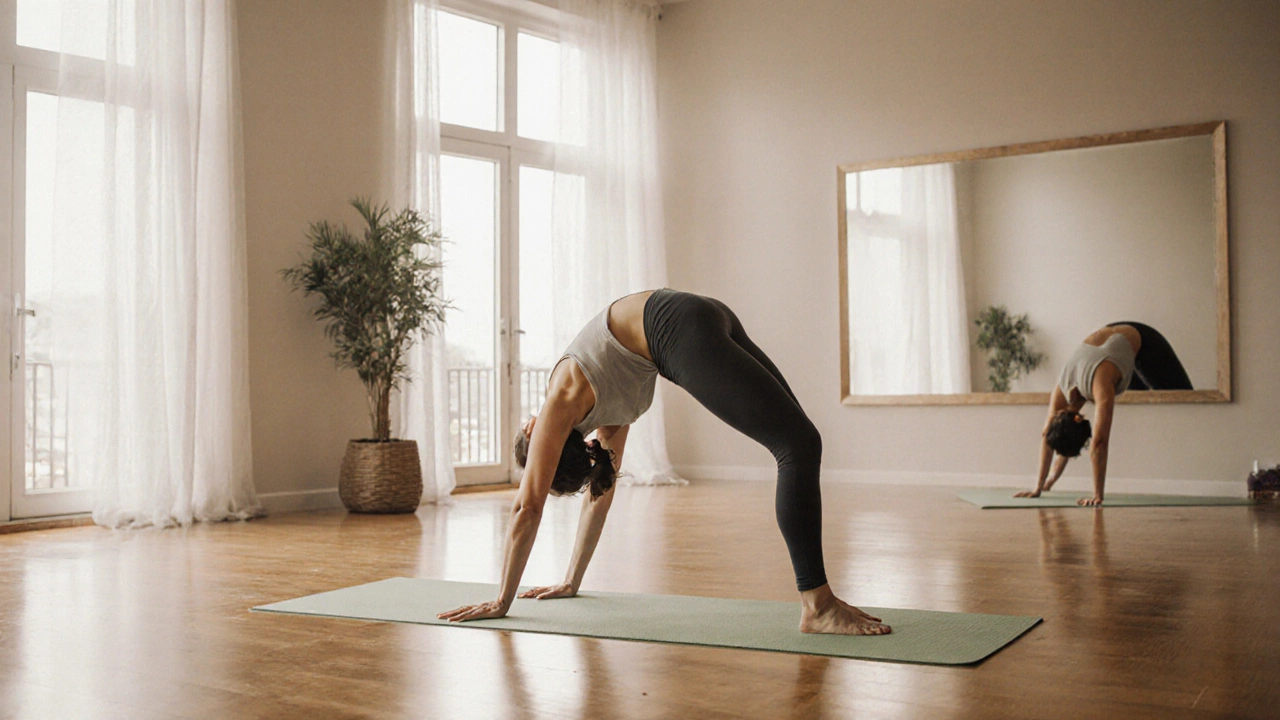Yoga Benefits Timeline: What to Expect When You Practice Regularly
If you’re wondering whether yoga is worth the time, the answer lies in the timeline of benefits. Your body and mind don’t change overnight, but clear milestones show up as you stick with the practice. Knowing what to look for keeps you motivated and helps you plan the right routine for each stage.
Early Weeks: Quick Wins
During the first two weeks you’ll notice a few fast‑acting changes. Breathing exercises (pranayama) calm the nervous system, so you may feel less stress after a single session. Light stretches also improve flexibility, especially in the hips and shoulders, making everyday movements feel easier.
Another early win is better posture. Even a short 20‑minute flow trains the core and spinal muscles, which reduces slouching at the desk. If you’ve tried the post “Is 20 Minutes of Yoga a Day Enough?”, you’ll recall that consistency, not duration, drives these initial results.
Months In: Deeper Changes
After a month or two the benefits start to dig deeper. Strength builds in the legs, arms, and back because many poses require you to hold weight in unusual ways. You’ll notice improved balance when you stand on one foot or walk on uneven ground.
Mental shifts become more noticeable too. Regular meditation sections reduce anxiety and sharpen focus. People who practice yoga‑only training (see the post “Is Yoga Enough for Fitness?”) often report clearer thinking during work and better sleep quality.
Heart health also gets a boost. Gentle flow combined with breath work can lower resting heart rate and improve circulation, similar to a light cardio session without the pounding.
Long‑Term Benefits: Lifestyle Transformation
Stick with yoga for six months to a year and you’ll see lasting changes. Chronic pain, especially lower back and knee discomfort, often subsides because the muscles surrounding joints become well‑conditioned and more flexible.
Weight management becomes easier. While yoga isn’t as high‑calorie burning as HIIT, the increased muscle mass raises basal metabolism, and the mindfulness aspect curbs emotional eating.
Finally, the habit of regular self‑care sticks. You’ll find yourself reaching for a mat instead of scrolling your phone when stress spikes. This mindset shift is the most valuable part of the timeline – it turns yoga into a lifelong tool, not just a short‑term fix.
To make the most of each stage, match your routine to the goal you’re chasing. For early flexibility, focus on Sun Salutations and hip openers. For strength, add standing balances and arm‑supporting poses like plank and chaturanga. For mental calm, end each session with a few minutes of guided breathing.
Remember, the timeline isn’t a race. Listen to your body, celebrate the small wins, and keep adding variety. Over weeks, months, and years the benefits stack up, giving you a healthier, calmer, and more resilient self.

How Quickly Can Yoga Transform Your Body?
Maeve Larkspur Oct 15 0Discover how quickly yoga can reshape your body, the timeline for flexibility, strength, and composition changes, and a proven 4‑week plan to accelerate results.
More Detail
How Long Does Yoga Take to Work? A Realistic Results Timeline Backed by Research
Maeve Larkspur Sep 12 0Wondering when yoga starts working? See changes after 1 class, 1-2, 4, 8+ weeks, how often to practice, what styles help, and how to track results without burning out.
More Detail